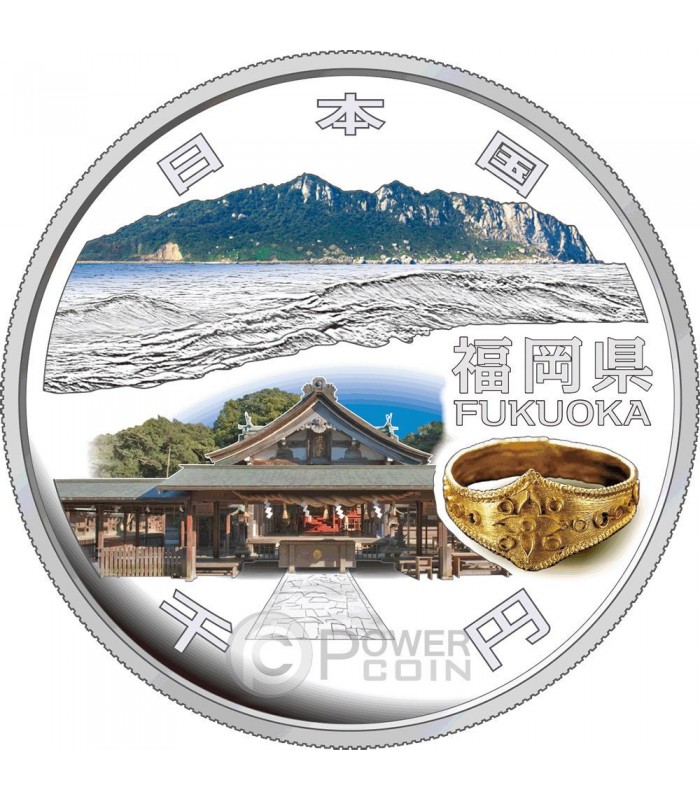Obverse design: Okinoshima Island, Munakata Taisha Grand Shrine and A Gold Ring Okinoshima Island:This is a solitary island remotely located in the Sea of Genkai, where national rituals were performed between the late 4th century to the end of the 9th century to pray for the success of diplomacy and safety of navigation. Called the "Shoso-in (Treasure House) of the Sea," this island is home to 22 ancient ritual sites that are well preserved. Here, about 80,000 artifacts, which had been used as ritual offerings, were unearthed, and all were designated as National Treasures. Munakata Taisha Grand Shrine: Munakata Taisha Grand Shrine is a combination of three Shinto shrines: Okitsu-miya Shrine on Okinoshima Island, Nakatsu-miya Shrine on Oshima Island and Hetsu-miya Shrine on Tashima. These shrines are devoted to three goddesses who were believed to protect the sea route to the Korean peninsula. The main hall and worship hall of Hetsu-miya Shrine are National Treasures. A Gold Ring:This is one of the artifacts unearthed on Okinoshima Island. Similar rings were discovered in the royal tombs of Silla in Gyeongju, Korea, which implies that this ring was brought from the Silla Kingdom during the Three Kingdoms period of Korea. The ring was designated as a National Treasure in 1962. Common reverse design of 1000 yen silver coin: Snow Crystals, Moon and Cherry Blossoms.
Read moreShow less



































































